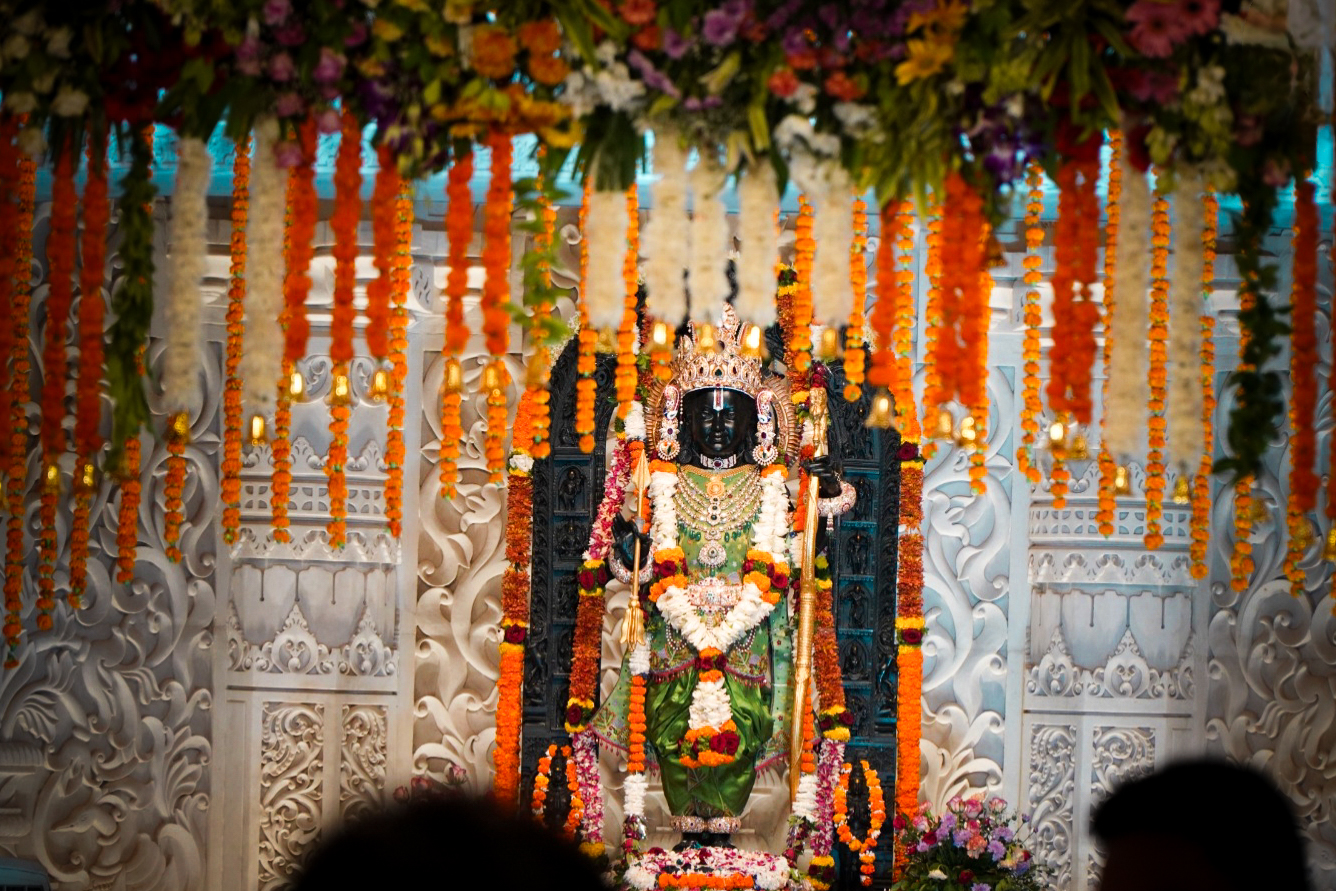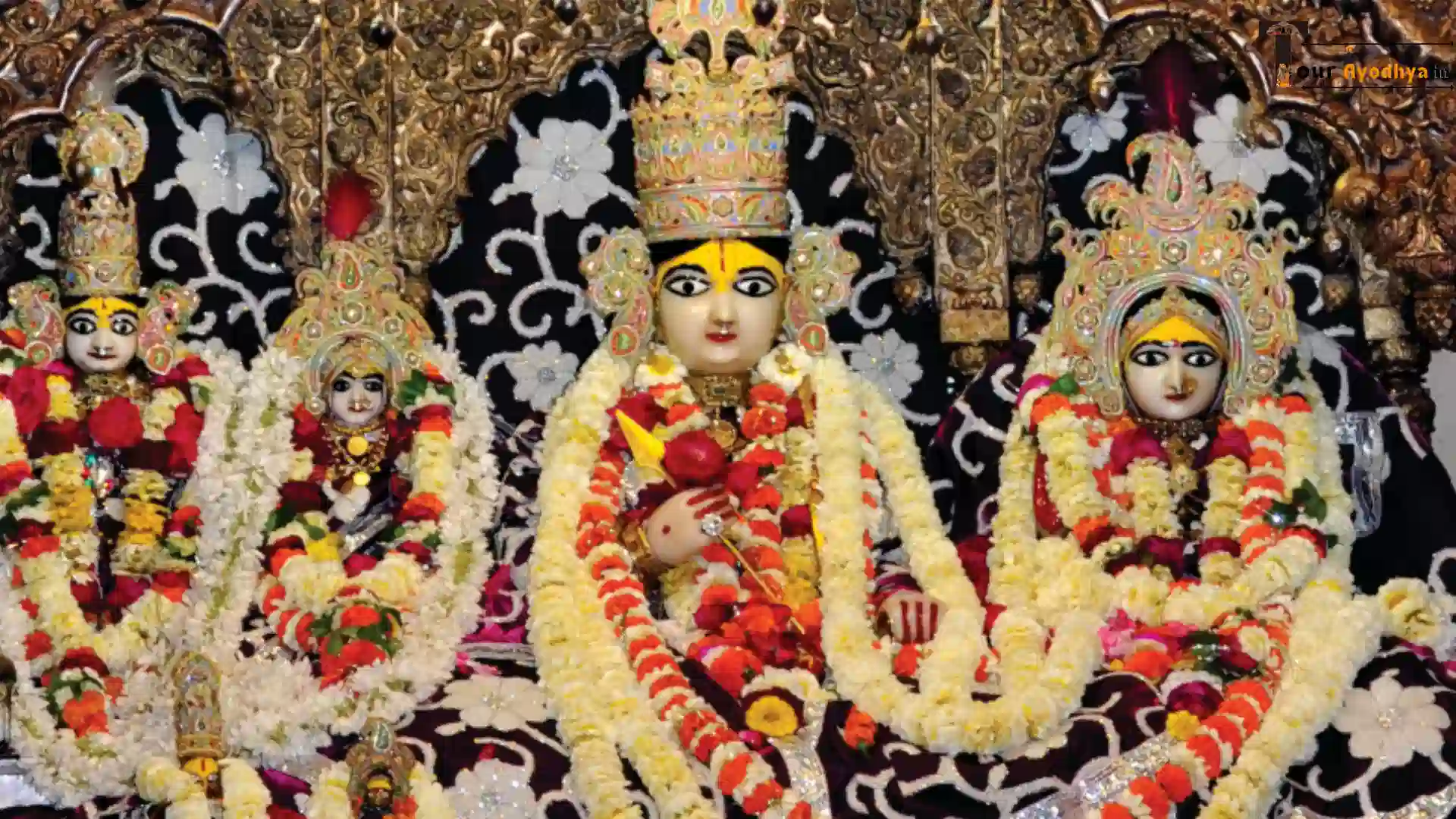Guptar Ghat, also known as Gopratara Tirtha, stands as a place of profound spiritual and historical significance on the sacred Saryu River in Ayodhya, Uttar Pradesh, India. It is revered as the point where Lord Rama concluded His earthly pastimes and returned to His eternal abode.
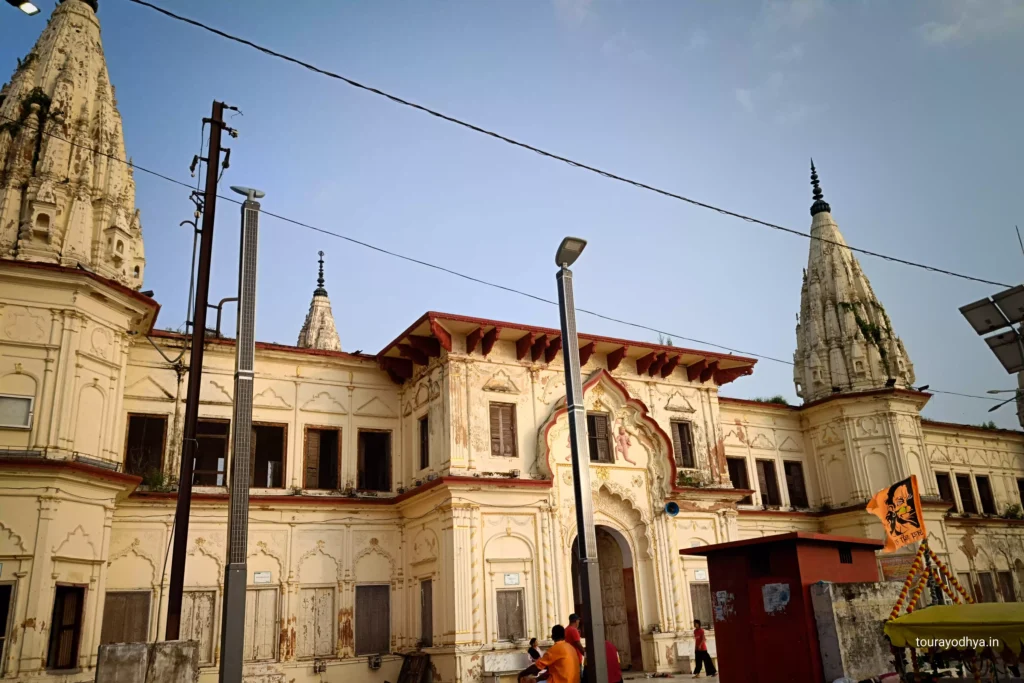
Table of Contents
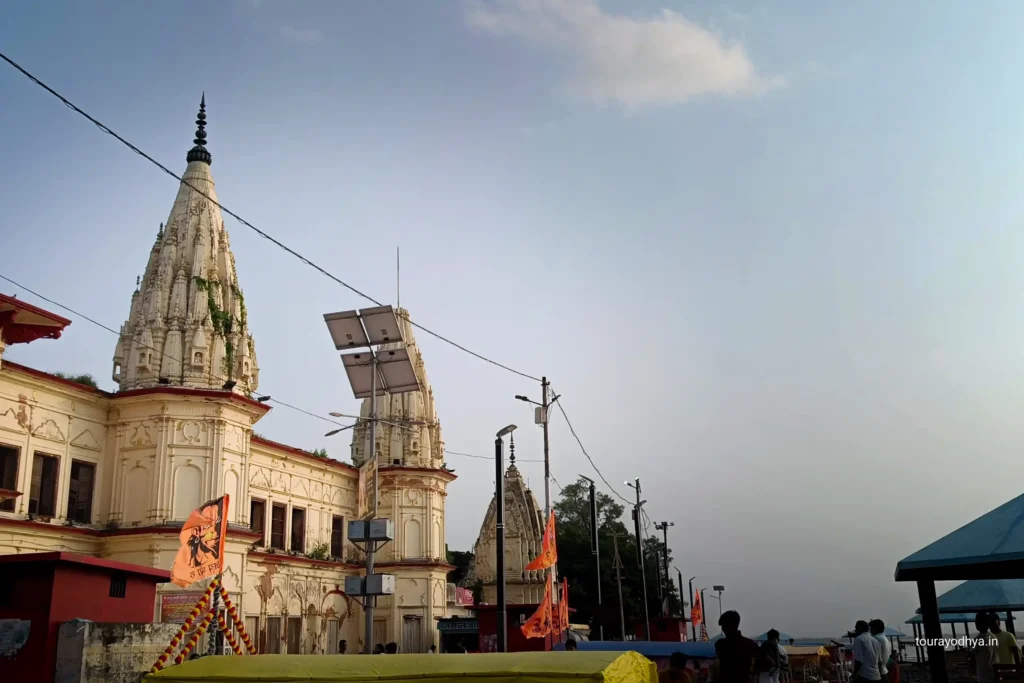
Historical Significance of Guptar Ghat
The primary reason for Guptar Ghat’s immense reverence is its association with the Mahaprayana (Great Departure) of Lord Rama. According to the Skanda Purana, as narrated by sage Agastya to Srila Vyasadeva, this is the very spot where Lord Rama, accompanied by His beloved brothers Bharata and Satrughna, and indeed all the citizens of Ayodhya, performed ‘Jal Samadhi’ – a voluntary immersion into the Saryu River to leave their mortal bodies and ascend to His transcendental abode, Vaikuntha.
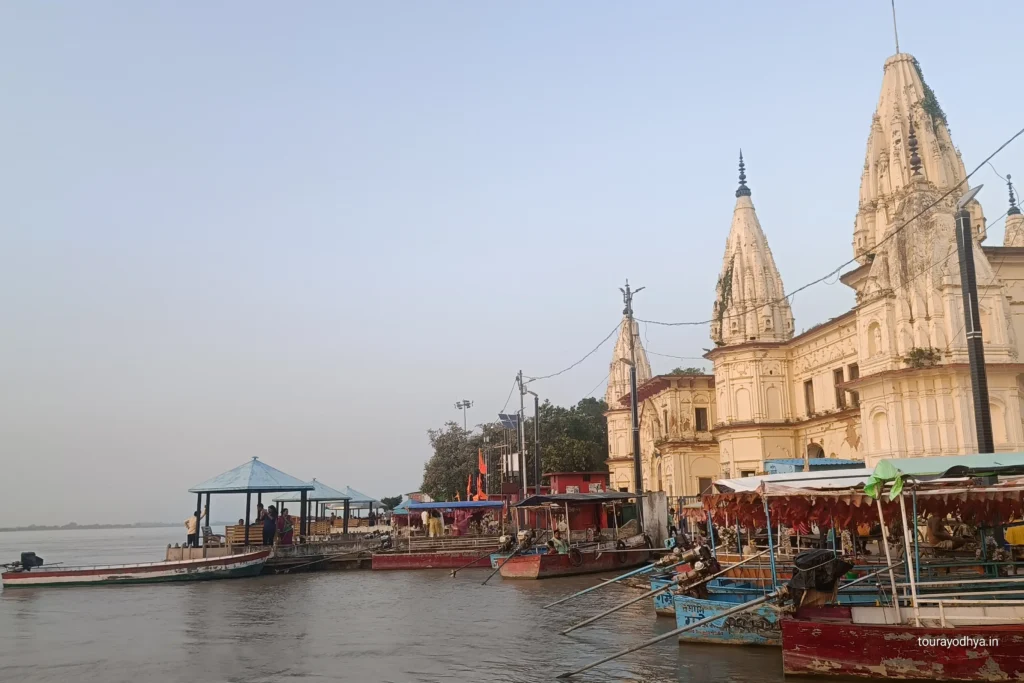
This momentous event signifies Lord Rama’s completion of His divine mission on Earth. It is described that all of Lord Rama’s energies, along with the brahmanas, citizens, and even animals, followed Him to the Saryu, and all who did so attained Vaikuntha, the spiritual planet where Lord Rama eternally resides. This highlights the all-encompassing mercy and power of the Lord.
Historically, the ghat has also seen human intervention; King Darshan Singh undertook its renovation in the early 19th century.
Cultural and Social Role
Guptar Ghat holds a unique position in Hindu traditions, particularly due to the belief that all the holy tirthas (pilgrimage sites) from across the world gather here during the auspicious Kartik month (Kartik Maas). This makes Kartik Purnima a particularly significant time for pilgrims to visit. The practice of ‘Kalpavas’, which involves residing at the ghat for the entire Kartik month, is observed by devotees seeking profound spiritual merit. It is believed that performing rituals such as bathing, chanting, offering sacrifices (homa), and giving charity with unwavering faith at Guptar Ghat yields imperishable spiritual benefits and cleanses all sins.
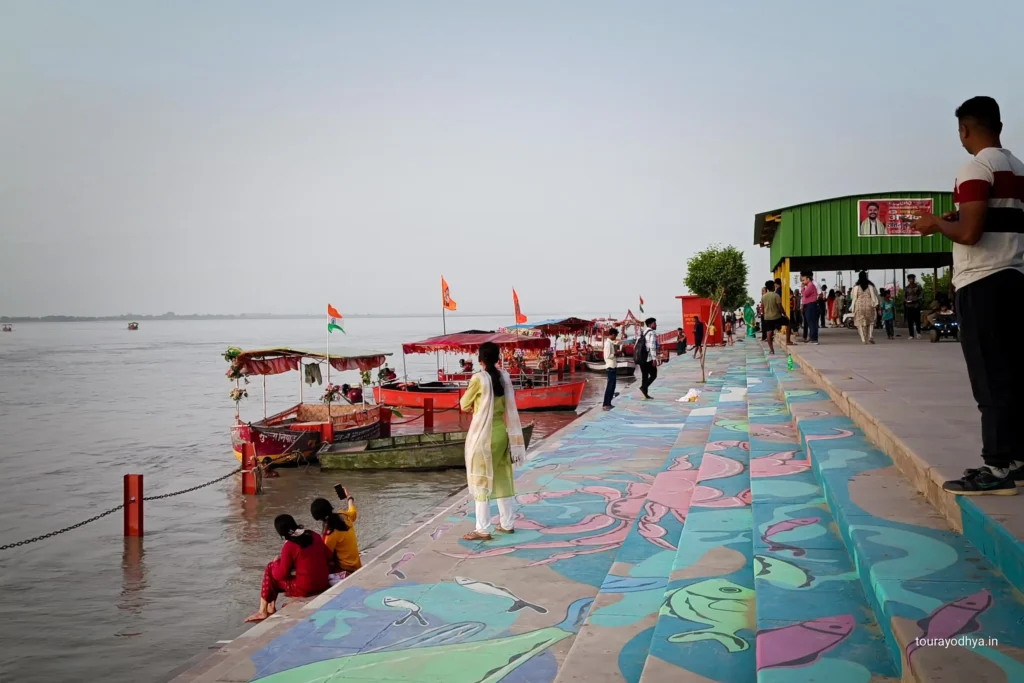
The site is also home to the Guptahari and Chakrahari temples, where Lord Vishnu is worshipped in a single deity form encompassing both aspects. He is known as Guptahari because He secretly performed penance here to empower the demigods in their battle against the asuras. He is also called Chakrahari because His divine Sudarshana Chakra is said to have fallen here when He arrived in Ayodhya. After their victory, the demigods requested Lord Guptahari to remain in Ayodhya for their protection, a request to which He assented.

Geography and Physical Features
Guptar Ghat is gracefully situated on the banks of the sacred Saryu River. Geographically, it is located approximately 10 kilometres from the main city of Ayodhya. Its location is about 14 kilometres to the west of Ayodhya, along the Saryu banks. The area is also significant as it is near the confluence of the Ghaghara River with the Saryu River.
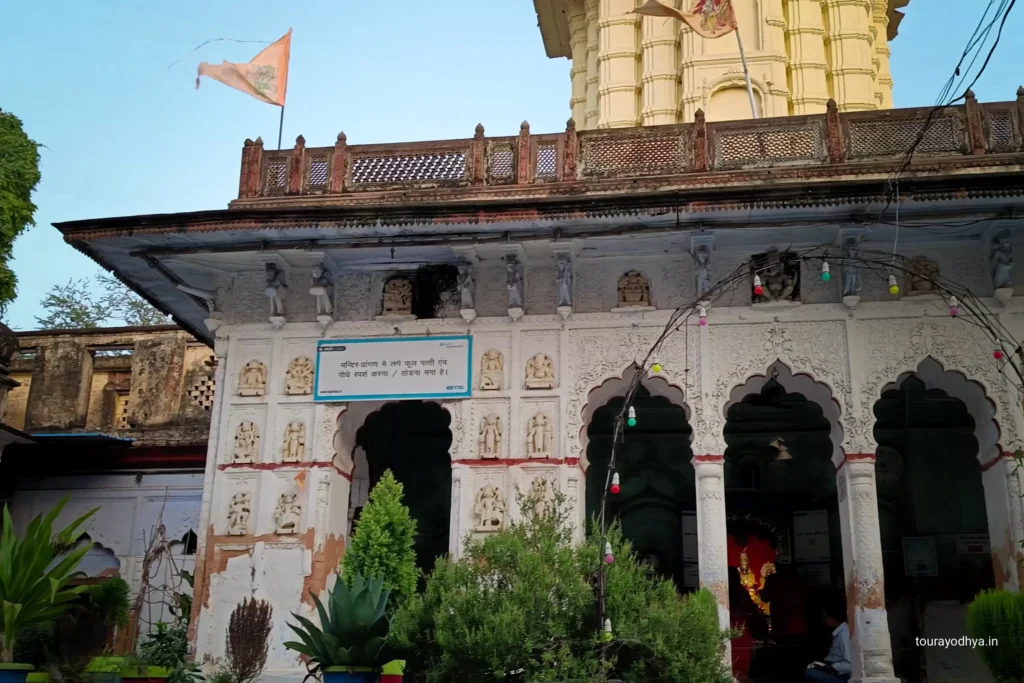
Accessibility and Tourism
Guptar Ghat is recognised as a notable spiritual and tourist destination in Ayodhya. It’s relatively short distance from Ayodhya makes it an accessible site for pilgrims and tourists alike.

Guptar Ghat Ayodhya Timings
Timings: 24 Hours
Entry: Free
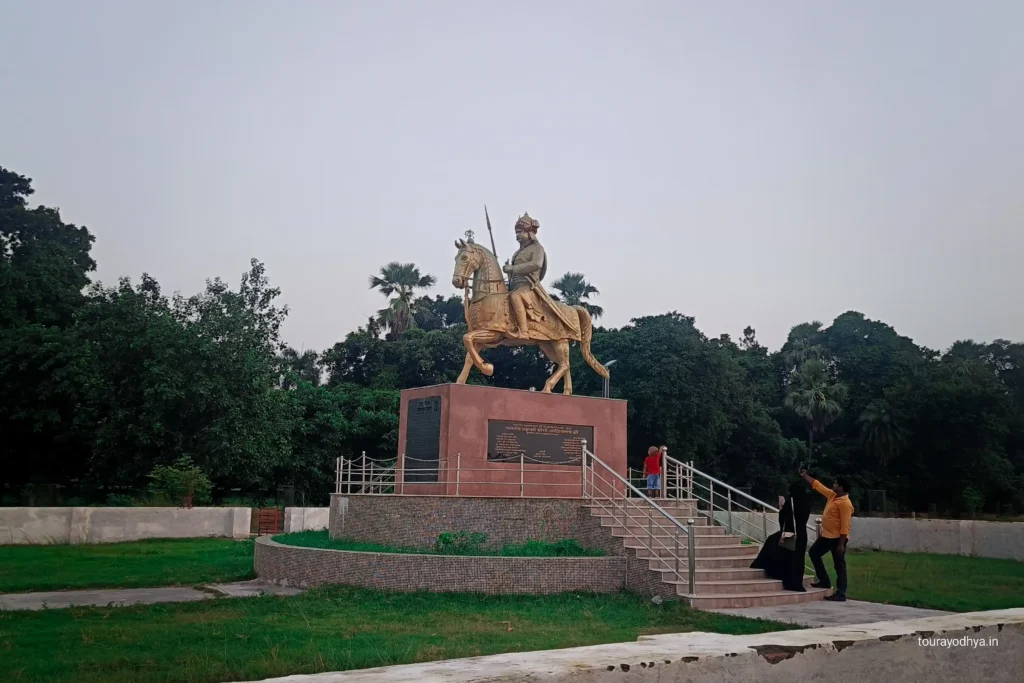
Guptar Ghat Ayodhya Location
Guptar Ghat is prominently located on the banks of the Saryu River, approximately 10 to 14 kilometres west of Ayodhya.
Location: Faizabad Cantt, Faizabad, Uttar Pradesh 224001
FAQ’s Guptar Ghat
Where is Guptar Ghat in Ayodhya?
Guptar Ghat is located on the banks of the Saryu River, approximately 10 to 14 kilometres west of Ayodhya.
Why should you visit Guptar Ghat in Ayodhya?
You should visit Guptar Ghat for its profound historical and spiritual significance. It is the sacred spot where Lord Rama, along with His brothers Bharata and Satrughna, and the citizens of Ayodhya, took ‘Jal Samadhi’ to return to His eternal abode. Visiting, bathing, and performing rituals here, especially during Kartik Purnima, is believed to grant immense spiritual merit, cleanse sins, and lead to liberation. The ancient Guptahari and Chakrahari temples also make it a significant pilgrimage site.
How to reach Guptar Ghat from Ayodhya?
Guptar Ghat is located 10 to 14 kilometres from Ayodhya. While specific transport routes are not detailed in the sources, its status as a major pilgrimage and tourist site implies it is well-connected and accessible via local transport from Ayodhya.
Guptar Ghat timings?
Timings: 24 Hours, but Some Places, like Parks and Temples, Have Their Specific Timings.
Where is Guptar Ghat located?
Guptar Ghat is situated on the banks of the Saryu River, approximately 10 to 14 kilometres west of Ayodhya. It is near the confluence of the Ghaghara and Saryu rivers.




